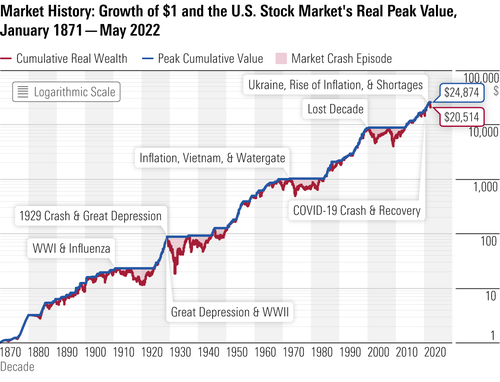
It's difficult to make the case that global supply issues are improving, but to paraphrase theologian Thomas Fuller, it's always darkest before the dawn.
Supply chains are slowly mending and the situation is better than when Morningstar last looked into this issue in May.
Freight rates have since fallen from their late 2021 peak, and while delays and schedule reliability remain far from their pre-pandemic levels, the direction of travel is positive. Lockdown measures imposed by governments to stop the spread of Covid-19 have all but ceased, meaning manufacturers are back to running without interruption.
Labour shortages that contributed to bottlenecks at ports and distribution centres are easing on the whole, with numbers employed in transport now back to pre-pandemic levels. Capacity on sea freight has been added over the last two years, while the missing capacity in airfreight, which disappeared as passenger flights were grounded, is coming back steadily. All of this taken together should mean visible improvement in the situation from the second half of 2022.
Reasons to be Optimistic
1) Ocean freight reliability is improving with reduced delays, albeit off a high 2021 base;
2) The underlying causes of the supply chain crisis — lockdowns, social distancing mandates, and labour shortages — have all seen improvements over the last six months;
3) Freight capacity in sea and air is increasing through 2022, which should help to alleviate shortages, particularly on east-to-west routes;
4) Freight rates, already off their late 2021 highs, should fall further in the second half of 2022, which should go some way to taking the pressure off global inflation rates;
5) Automotive manufacturers are strengthening ties with semiconductor manufacturers and upscaling technology as a longer-term fix to the shortages caused by the pandemic. And semiconductor inventories are slowly rebuilding, as producers are running plants hard and investing in new facilities to meet increased demand, which should peak this year.
Some Caveats
This doesn't mean that all of our supply chain problems are solved.
Recent European Commission surveys of businesses across the European Union have pointed to shortages of material and equipment as a limiting factor on production for 2022, which could cause significant pain for recovering industries. Additionally, it will take time to clear the bottlenecks at ports across the world. Inflationary pressure driven by elevated freight rates is also an issue that will take significant time to dissipate.
Many customers have been locked in to longer-term contracts at high rates, with many of these costs being passed on to the end consumer through price increases on goods shipped. This explains at least part of the current inflationary crisis we find ourselves in, with central banks around the world raising interest rates in an attempt to curb rising inflation rates.
We are still exposed to exogenous shocks in the near term, with recent examples of the Russia-Ukraine war and the lockdown in Shanghai adding further strain to the system.









.jpg)










